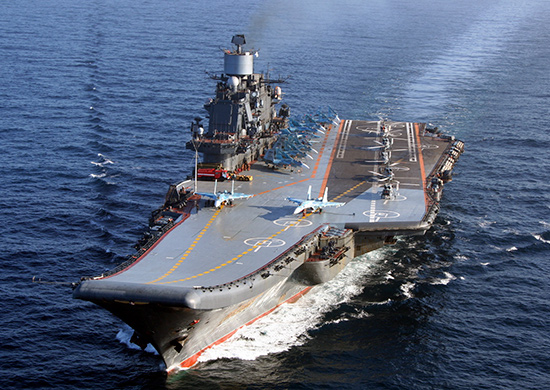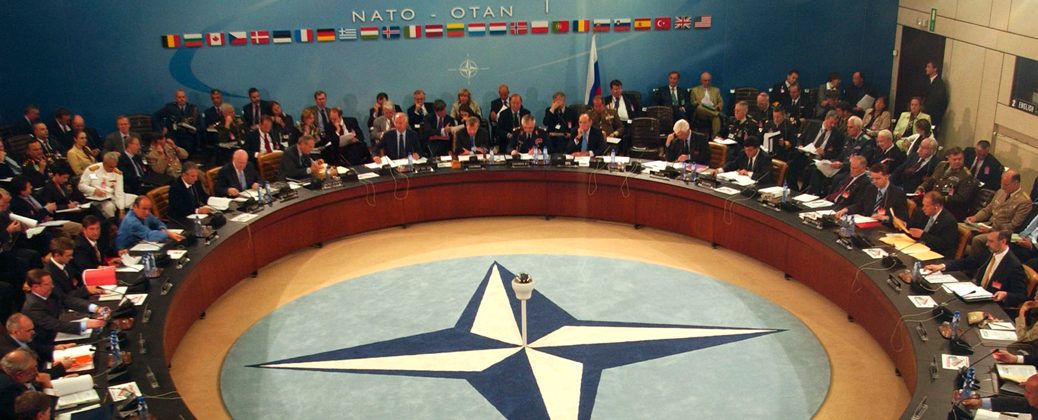| 7 March 2017, 10:33
Translated from: TV Zvezda |
“Nuclear trains” of Russia go to the road |
|
In Russia, a new nuclear weapon is being prepared for the final stage of tests: the Barguzin combat railway missile system, based on its predecessor, the BZhRK “Molodets” (SS-24 Scalpel), which stood on alert from 1987 to 2005 and Was removed from the arsenal by agreement with the United States of 1993. What forced Russia to return to the creation of these weapons? When once again in 2012 the Americans confirmed the deployment of their missile defense facilities in Europe, Russian President Vladimir Putin rather rigidly formulated Russia’s response position. He officially stated that the creation of an American missile defense system actually “nullifies our nuclear missile potential,” and announced that our response would be “the development of shock nuclear missile complexes.” One of such complexes was BzhRK “Barguzin”, which the US military did not particularly like, having caused their serious concern, since its adoption makes it useless for the US missile defense system to exist as such.
The predecessor of “Barrugin” – “Good” BJRC until 2005 was already in service with the Strategic Missile Forces. Its main developer in the USSR was the Yuzhnoye Design Bureau (Ukraine). The only producer of missiles is the Pavlograd Mechanical Plant. Tests of the BZHRK with the RT-23UTTX “Molodets” missile (according to NATO classification – SS-24 Scalpel) in the railway version began in February 1985 and ended by 1987. BZHRK looked like ordinary railway trains from refrigerated, postal-baggage and even passenger wagons. Within each structure there were three launchers with solid-fuel rockets “Molodets”, as well as the entire system of their provision with the command post and combat calculations. The first BZHRK was put on alert duty in 1987 in Kostroma. In 1988, five regiments (totaling 15 launchers) were deployed, and by 1991 – three missile divisions: at Kostroma, Perm and Krasnoyarsk, each consisted of four missile regiments (a total of 12 BZHRK formations). Each train consisted of several cars. One car is a command post, three others – with an opening roof – launchers with missiles. Moreover, it was possible to launch the missiles from planned sites, as well as from any point on the route. For this purpose, the train stopped, a contact suspension of electric wires was sent to the sides by a special device, the launch container was placed in a vertical position, and the rocket started.
Complexes stood at a distance of about four kilometers from each other in stationary shelters. Within a radius of 1500 km from their base, along with the railway workers, work was carried out to strengthen the canvas: heavier rails were laid, wooden sleepers were replaced with reinforced concrete, the embankments were filled with more dense gravel. To distinguish BZHRK from ordinary freight trains, thousands of passengers across the vast expanses of Russia, were only able to professionals (launch modules with a missile had eight wheel sets, the rest of the cars – four). Over the course of the day, the train could pass about 1200 km. The time of his combat patrol was 21 days (thanks to stocks on board, he could work autonomously for up to 28 days). BJRK was of great importance, even the officers who served on these trains had higher ranks than their counterparts in similar positions of mine complexes.
Soviet BZHRK is a shock for Washington The rocket writers tell either the legend or the fact that the Americans themselves allegedly pushed the creation of the BZHRK of our designers.Speak once our intelligence has received information that in the US they are working on the creation of a railway complex that can move through underground tunnels and, if necessary, appear from under the ground at certain points in order to unexpectedly launch a strategic missile for the enemy. To the report of scouts even photos of this train were attached. Apparently, these data made a strong impression on the Soviet leadership, because it was immediately decided to create something like that. But our engineers approached this issue more creatively. They decided: why drive the trains underground? You can put them on ordinary railways, disguised as commodity trains. It will be easier, cheaper and more efficient. Later, however, it turned out that the Americans conducted special studies that showed that, in their conditions, BMD will not be effective enough. To us they simply slipped the deuce, in order to once again shake the Soviet budget, forcing us, as they then thought, to waste, and the photos were taken from a small full-scale model.
But by the time all this became clear, it was already too late to work it out for the Soviet engineers. They, and not only in the drawings, have already created a new nuclear weapon with a missile of individual guidance, a range of 10,000 km with ten 0.43MT combat units and a serious set of means for overcoming missile defense. In Washington, such news caused a real shock. Still would! How do you determine which of the “freight cars” to destroy in the event of a nuclear strike? If you shoot at all at once – no nuclear warheads are not enough.Therefore, in order to track the movement of these trains, which easily escaped the surveillance systems, the Americans almost constantly had to keep a group of 18 spy satellites over Russia, which was very expensive for them. Especially when you consider that the US intelligence services have never managed to identify BZHRK on the patrol route. Therefore, as soon as in the early 90’s the political situation allowed, the United States immediately tried to get rid of this headache. At first they got from the Russian authorities that the BZHRK did not ride around the country, but stood on the joke. This allowed them to constantly keep over Russia instead of 16-18 spy satellites only 3-4. And then they persuaded our politicians to destroy BZHRK. Those agreed officially under the pretext of allegedly “expiration of warranty periods of their exploitation.”
How to cut “scalpels” The last combat staff was sent for remelting in 2005. Eyewitnesses said that when in the twilight twilight the wheels of cars and the nuclear “train-ghost” with the rockets “Scalpel” started off on the rails, the strongest men could not stand it: tears rolled from the eyes and gray builders, and missile officers. They said goodbye to the unique weapon, in many combat characteristics superior to everything that was available and even planned to be adopted in the near future for armament. Everyone understood that this unique weapon in the mid-1990s became hostage to the political agreements of the country’s leadership with Washington. And not selfish. Apparently, therefore, each new stage of destruction of BZHRK strangely coincided with another tranche of the International Monetary Fund’s loan. The rejection of BZHRK also had a number of objective reasons. In particular, when Moscow and Kiev “fled” in 1991, it immediately hit Russia’s nuclear power. Almost all of our nuclear missiles during the USSR were made in Ukraine, under the leadership of academicians Yangel and Utkin. Of the twenty types that were then in service, twelve were designed in Dnipropetrovsk in the Yuzhnoye Design Bureau and were manufactured there, at the Yuzhmash plant. BZHRK also did in the Ukrainian Pavlograd.
But each time to negotiate with the developers from Nezalezhnaya about the extension of their service life or modernization has become increasingly difficult. As a result of all these circumstances, our generals had to report with an acidic mine to the leadership of the country, as “in accordance with the planned reduction of the Strategic Missile Forces, another BZHRK was withdrawn from combat duty.” But what to do: politicians have promised – the military is compelled to carry out. At the same time, they understood perfectly well: if we cut and take off the missiles at the same rate as when we were in the late 90’s, then in just five years instead of the existing 150 “Voevod” we will not have any of these heavy missiles. And then no light “Poplar” weather will not do – and at that time there were only about 40 of them at all. For the US missile defense it’s nothing. For this reason, as soon as Yeltsin freed the Kremlin cabinet, a number of people from the country’s military leadership, at the request of the missile men, began to prove to the new president the necessity of creating a nuclear complex, similar to the BZHRK. And when it became finally clear that the plans to create its own missile defense system, the US is not going to refuse under any circumstances, work on the creation of this complex really began. And now in the very near future the States will again receive their former headache, now in the form of a new generation of BZHRK called “Barguzin.”And, as the rocketeers say, these will be ultramodern missiles, in which all the shortcomings available to the Scalpel are eliminated.
“Barguzin” – the main trump card against US missile defense The main disadvantage, which was noted by the opponents of BZHRK, is the accelerated depreciation of the railway tracks along which it moved. They had to be repaired frequently, and the military and railwaymen had eternal disputes about it. The reason for this was heavy missiles – weighing 105 tons. They did not fit in one car – they were required to be placed in two, reinforcing wheel pairs on them. Today, when the issues of profit and commerce have come to the fore, RZhD is certainly not ready, as it was before, to infringe on its own interests for the defense of the country, as well as bear costs for repairing the canvas in case it is decided that on their roads again Should run BZHRK. It is the commercial reason, according to some experts, today could become an obstacle to the final decision to adopt them into service. However, now this problem has been removed. The fact is that in the new BZHRK heavy missiles will not be. The complexes are equipped with lighter RS-24 missiles, which are used in the Yars complexes, and therefore the weight of the car is comparable to that of the conventional one, which makes it possible to achieve perfect camouflage of the combat composition. True, the RS-24 has only 4 warheads, and on old missiles there were a dozen.But here we must take into account that the Barguzin itself carries not three missiles, as it was before, but twice as many. This, of course, all the same – 24 to 30. But do not forget that the “Yars” – almost the most modern development, and the probability of overcoming the ABM is much higher than their predecessors. Updated and the navigation system: now you do not need to specify in advance the coordinates of the goals, everything can be changed quickly.
For a day, such a mobile complex can overcome up to 1000 km, cruising along any railway branch of the country, indistinguishable from the usual composition with refrigerated wagons. The “autonomous” time is a month.There is no doubt that the new BZHRK group will become a much more effective response to US missile defense, rather than even the deployment of our Iskander tactical missiles at the borders of Europe, which are so feared in the West. Also, there is no doubt that the Americans will not like the idea with BRBK (although theoretically their creation will not violate the latest Russian-American agreements). BJRC at one time constituted the basis of the retaliatory strike grouping in the Strategic Missile Force, since they had an increased survivability and were likely to survive after the first strike by the enemy. The United States was afraid of it no less than the legendary “Satan”, since the BZHRK was a real factor in the inevitable retaliation. By 2020, it is planned to adopt five regiments of the Barguzin Barguzin – these are, respectively, 120 warheads. Judging by everything, BZHRK will become the strongest argument, in fact our main trump card in the dispute with the Americans regarding the expediency of deploying a global missile defense system. Author: Oleg Bozhov
Photo: Ministry of Defense of the Russian Federation
|
Category Archives: WW3
Russian ICBMs back on Combat Patrol
Translated from: Russian Ministry of Defense (01-12-2017)
About 30 launchers PGRK “Topol” and the “yars” went on combat patrol routes from Tver to Irkutsk regions

These tactical exercises are conducted around the clock without any restrictions, including those in harsh climatic and weather conditions. They will check the readiness of personnel, as well as weapons and military equipment to long-term bearing of duty on combat patrol routes.
During the lessons will be worked out measures to bring the units and subunits of the compounds in readiness for the conclusion in the field areas, the output missile battalions mobile ground missile complex (PGRK) on combat patrol routes and alert duty in the field positions in conditions close to the fighting.
Particular attention during the practical actions of troops will be given to counter air and ground (conditionally) the enemy, reflecting the attacks of sabotage and reconnaissance groups, survivability and combat missions in difficult conditions. One of the priorities will be the testing of a wide range of questions to identify, block and destroy conventional sabotage and reconnaissance groups at night.
For aerial reconnaissance UAV will be used.
For these events attracted nearly 1,000 recruits who have mastered the basic training program.
In the winter period of training in the SMF is planned for more than 130 combat training, including – tactical maneuvers and exercises with missile regiments and missile divisions, as well as a number of command-and-staff exercises with missile forces and formations under the leadership of the commander of the Strategic Missile Forces and the commanders of missile armies.
Department of Information and Mass Communications of the Russian Ministry of Defense
Contact: @CyberDurden
NATO Shocked: “Russia Has Sent All the Northern Fleet to Syria”
(Translated from Вести) — NATO claimed that to strengthen the campaign in Syria, Russia has sent all the ships in the Mediterranean and the Northern Fleet of the Baltic Sea. This was reported by Reuters, citing an unnamed diplomat in the Alliance. At the same time representatives of the press service of the Northern Fleet has reported that a group of ships has been sent into the Mediterranean Sea.
According to an unnamed diplomat, is the most large-scale operation to deploy since the end of the Cold War. But he has not provided any concrete evidence of his words. At the same official reports from NATO on this issue have been reported, according to RIA Novosti.
It clarifies that thus the Russian Federation intends to increase the number of aircraft in Syria, and then in two weeks to start the final air operation in Aleppo.
Earlier, representatives of the Northern Fleet’s press service reported that on 15 October began a campaign of naval aircraft carrier group of the Northern Fleet in the Mediterranean and the North-East Atlantic. This was done in accordance with the plan of combat training of the Navy.

The group – heavy nuclear missile cruiser “Peter the Great”, the heavy aircraft-carrying cruiser “Admiral of the Soviet Union Fleet Kuznetsov” large anti-submarine ships, “Vice-Admiral Kulakov” and “Severomorsk”, as well as support vessels.

Staffing wing of the aircraft carrier “Admiral Kuznetsov” is made up of carrier-based aircraft Su-25 and Su-33 and Ka-27 / Ka29. Currently, the aircraft carrier is tested a new air group consisting of MiG-29K fighters and helicopters
“Though unlike most Germans I had daily access to foreign newspapers, especially those of London, Paris and Zurich, which arrived the day after publication, and though I listened regularly to the BBC and other foreign broadcasts, my job necessitated the spending of many hours a day in combing the German press, checking the German radio, conferring with Nazi officials and going to party meetings. It was surprising and sometimes consternating to find that notwithstanding the opportunities I had to learn the facts and despite one’s inherent distrust of what one learned from Nazi sources, a steady diet over the years of falsifications and distortions made a certain impression on one’s mind and often misled it. No one who has not lived for years in a totalitarian land can possibly conceive how difficult it is to escape the dread consequences of a regime’s calculated and incessant propaganda. Often in a German home or office or sometimes in a casual conversation with a stranger in a restaurant, a beer hall, a cafe, I would meet with the most outlandish assertions from seemingly educated and intelligent persons. It was obvious that they were parroting some piece of nonsense they had heard on the radio or read in the newspapers. Sometimes one was tempted to say as much, but on such occasions one was met with such a stare of incredulity, such a shock of silence, as if one had blasphemed the Almighty, that one realized how useless it was even to try to make contact with a mind which had become warped and for whom the facts of life had become what Hitler and Goebbels, with their cynical disregard for truth, said they were.”
~ The Rise and Fall of the Third Reich, by William L. Shirer
Explosion in Chelsea (09-17-2016)
Forgive the tongue-in-cheek imagery, but this has the fingerprints [figurative] of a “lone wolf” narrative. See also: Just Don’t Expect to Get Your Bloody Black Backpack Back.
Turkey is a Stupid Place for US to Store Nuclear Weapons
https://www.youtube.com/watch?v=rM-hcgv0J3k
By Dawn’s Early Light was based on William Prochnau’s novel, Trinity’s Child.
An aside note: It’s the things we don’t know that frighten me the most. I discovered some relatively unknown history about Turkish involvement with U.S. nuclear weapons while reading former Secret Service officer, Gary Byrne’s, Clinton tell-all. Talking about his Air Force days as he establishes his his own credibility and character early in the book, Byrne writes:
“Arriving at Murtad, I learned that AFSP there had caught rogue Turkish officers trying to push an American F-104 Starfighter with a loaded nuke onto the flight line so they could steal a nuke and bomb Greece. Many Turks bitter about the Greco-Turkish War of 1919– 22 wanted a flash point to ignite a new war. I believe this was secretly why JFK took the nukes out of Turkey in 1962. Turks simply hate Greeks. We joked to each other, “Hey, if you’re not careful, I’ll tell the Turks you’re Greek!””
(Byrne, Gary J.. Crisis of Character: A White House Secret Service Officer Discloses His Firsthand Experience with Hillary, Bill, and How They Operate (p. 9). Center Street. Kindle Edition.)













